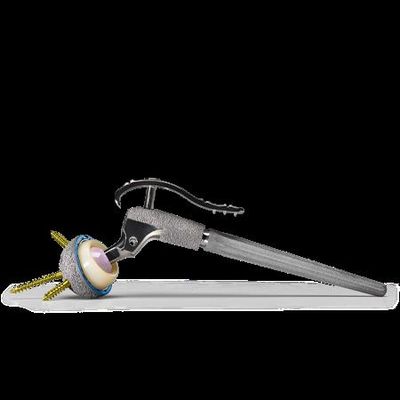

- Home
- Companies
- CD Diagnostics
- Products
- Model Arcos - Modular Femoral Revision ...

Model Arcos - Modular Femoral Revision System
Three Proximal and Five Distal Geometry Options
Providing surgeons 117 proximal/distal combinations and multiple auxiliary fixation options for various femoral defects. This allows surgeons and OR staff the surgical control, customization options, and reproducibility to efficiently address both patient and practice needs
One Simple, Easy to Use Instrumentation Platform
Standard and High Offset Options
Enables surgeons to reproduce various patient anatomies without lengthening the leg
Consistent Sizing
1 mm increments for increased O.R. efficiency and accurate matching of the patient’s femur
Roller-hardened Taper Junction Technology
For greater fatigue strength and three times more strength in cantilever beam testing than non-roller hardened tapers1
Three Proximal Body Options
- Cone
- Broach
- Calcar
- STS (Splined Tapered Stem)
- Slotted
- Bullet-tip
- Interlocking
- Ream-over
- Sterile field
- In-femur
- With three proximal bodies and five distal stems, which all work together regardless of size, a surgeon is able to address deficiencies in both regions of the femur independent of each other. This compatibility allows for a surgeon to change stems intraoperatively if encountered with something different from their preoperative planning. The availability of standard and high offset proximal body offerings are additional tools that allow the surgeon intraoperative flexibility to address patient needs as they arise.
- The Arcos Modular Femoral Revision System has the ability to use auxiliary implants to reattach the trochanteric fragment directly to the implant. By reattaching the trochanteric fragment in this fashion, the soft tissue and bony fragment are stabilized and provide an additional level of stability.
- Designed with common proximal implant and instrument geometries, the Arcos Platform design allows for intraoperative revision efficiency by reducing the number of instrument cases required to a number comparable to a primary hip surgery.
- Allows for initial scratch-fit stability and biologic fixation.2-9
- Allows for stress transfer to preserve cortical density.10
